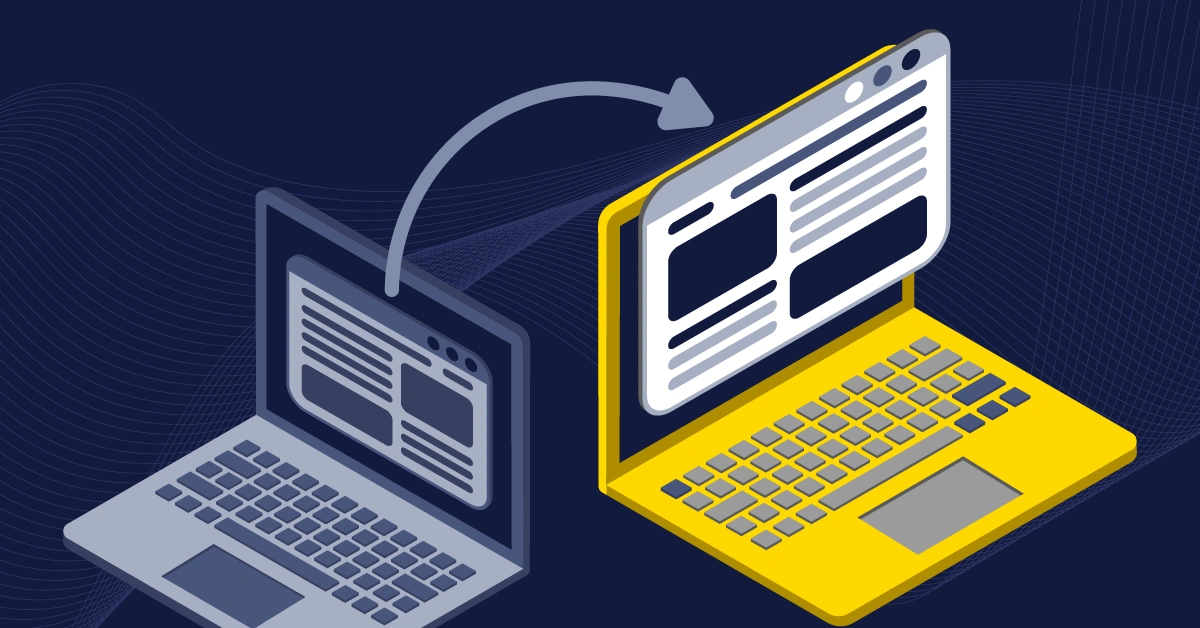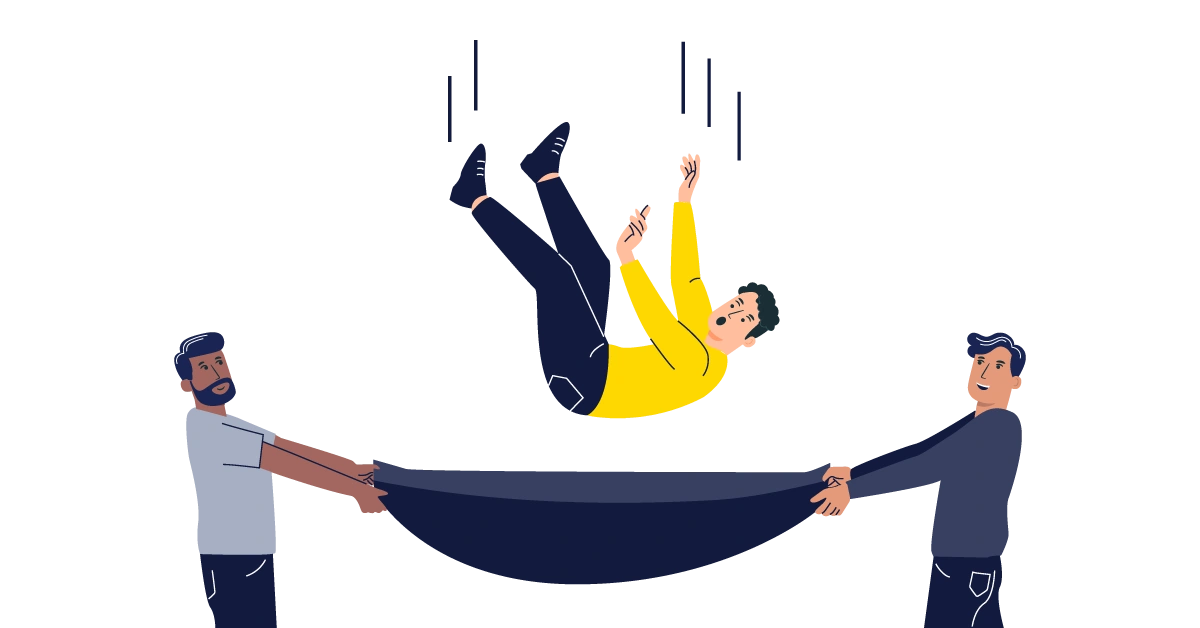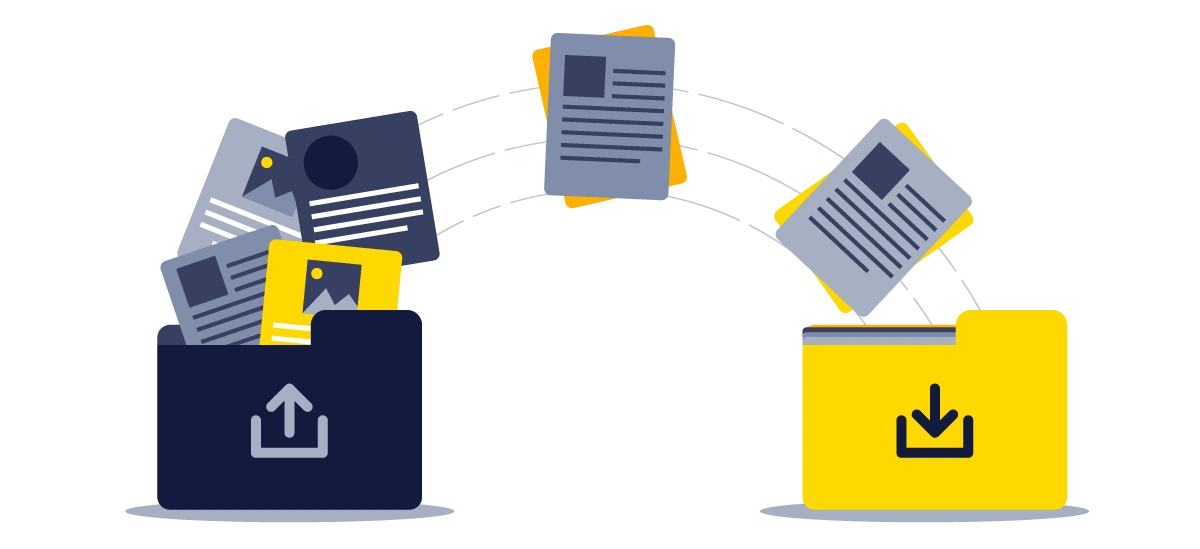
GSD
CMS Migration Made Easy: A 10-Step Guide
Posted by Diego Salinas Gardón on September 5, 2024
Many forward-thinking enterprises and businesses are considering a CMS migration from a traditional platform like WordPress to a headless CMS platform. Why? Because headless CMSs are more secure, scalable, customizable, and easier to integrate with other applications than their traditional counterparts.
Migrating to a new CMS can revolutionize your web strategy, but it can also be difficult. According to research, only 17% of data migrations succeed without exceeding their original budget and implementation plan.
Fortunately, you can make things easier by migrating to a modern CMS. In this post, we’ll guide you in the process so you can reap the benefits of a newer, more secure platform. Ready to dive into the world of CMS migration? Let’s get started.
Table of contents
When to migrate from your old CMS to a new one
Like most great things in life, this process starts with some questions. So let’s get Socratic and use a series of questions to gauge whether you need a new CMS.
-
Is your current CMS lagging?
-
Your site frequently experiences unexplained errors or crashes.
-
You struggle to implement basic modern features like responsive design or social media integration.
-
The administrative interface is slow and cumbersome, especially when dealing with large amounts of content.
-
You're unable to easily customize your site's look and feel without extensive coding.
-
The CMS vendor has stopped providing regular updates or support.
-
-
Is your system struggling to handle growth?
-
Your site slows down significantly as you add more content.
-
You frequently hit storage limits or need to upgrade your hosting plan.
-
The CMS struggles to manage multiple users working simultaneously.
-
You experience bottlenecks in your content publication workflow.
-
It's difficult to organize and find content as your library grows.
-
-
Slow load times affecting user experience?
-
Pages take more than a few seconds to load, especially on mobile devices.
-
Your bounce rate has increased due to slow loading times.
-
You're unable to implement performance optimization techniques like caching or content delivery networks.
-
Large media files (images, videos) cause significant slowdowns.
-
Your site's performance degrades noticeably during traffic spikes.
-
-
Is your data lacking safety?
-
You've experienced one or more security breaches.
-
The CMS lacks basic security features like two-factor authentication or SSL support.
-
Applying security patches is a complex, time-consuming process.
-
You're unable to set granular user permissions, potentially exposing sensitive data.
-
The system doesn't support or encourage regular security audits.
-
You're aware of unpatched vulnerabilities in your CMS version.
-
-
You need more adaptability
-
You struggle to publish content across different channels (web, mobile, social media).
-
It's difficult or impossible to create and manage APIs for your content.
-
The CMS doesn't support headless or decoupled architectures.
-
You can't easily integrate with other business tools or platforms.
-
Creating custom content types or fields is overly complex or limited.
-
What are the benefits of migrating your CMS?
While staying with a traditional platform won’t rock the boat, it won’t help you scale. Modern platforms often offer greater possibilities for customization, allowing you to tailor the system to your specific needs and easily extend its functionality as required.
Here are some of the main benefits of choosing a modern platform.
Enhanced performance
Speed matters. Slow load times frustrate users and hurt your SEO rankings. A headless CMS optimizes content delivery, ensuring your site is lightning-fast. Your users enjoy a seamless experience, and search engines reward you with better rankings.
How does a headless CMS do this? By decoupling the content management backend from the presentation layer, a headless CMS can serve content via APIs. This allows for faster load times as only the necessary data is transferred rather than entire web pages.
Improved Scalability
As your business grows, so do your content needs. A headless CMS scales effortlessly, accommodating increasing traffic and content without a hitch. Whether it's handling a viral post or a growing catalog, your CMS will keep up.
How does a headless CMS do this? The separation of concerns in a headless architecture allows for independent scaling of the content management system and the content delivery system. This means you can allocate resources where they're needed, whether in content creation, storage, or delivery.
Increased security
Security breaches can be catastrophic. Modern CMS platforms have advanced security protocols to protect your data. Regular updates and security patches ensure your site remains secure against emerging threats.
How does a headless CMS do this? In a headless CMS, the content repository is disconnected from the presentation layer, reducing the attack surface. API-based content delivery can be secured with tokens, reducing unauthorized access risks.
Content flexibility
Today's digital landscape demands versatility. A headless CMS allows you to create content once and publish it anywhere. Whether it's a website, mobile app, or IoT device, your content will be consistent and easily manageable.
Empowering marketers and developers
A headless CMS strikes a perfect balance, catering to the needs of both marketers and developers. It provides marketers with intuitive content creation tools while giving developers the flexibility to build innovative digital experiences. This synergy results in faster time-to-market, improved content quality, and more engaging user experiences across all platforms.
How does a headless CMS do this? By storing content in a structured, presentation-independent format and delivering it via APIs, a headless CMS enables true omnichannel content delivery. Content creators can focus on producing high-quality content without worrying about how it will be displayed on different platforms.
To learn more check out our blog post discussing the pros and cons of implementing a headless cms.
How to minimize migration risks
Embarking on a CMS migration journey is an exciting step toward improving your digital presence, but like any big move, it comes with its share of challenges. Don't worry though – we've got your back!
Let's explore some smart strategies to help you navigate the migration process smoothly and minimize any potential bumps along the way:
-
Risk assessment: Before beginning the migration process, it's crucial to conduct a thorough risk assessment. This involves identifying potential issues that could arise during migration, such as data loss, functionality breakdowns, or compatibility problems. Once these risks are identified, analyze the impact each one could have on your business operations and user experience.
-
Pilot testing: When it comes to CMS migration, starting small is a wise approach. Select a non-critical section of your website for initial migration. This pilot phase allows you to test the waters and identify potential issues on a smaller, more manageable scale. This documentation will prove invaluable when you move on to the full-scale migration, helping you anticipate and prevent issues before they occur.
-
Fallback plan: No matter how well you plan, it's always wise to have a contingency plan in place. Maintain a fully functional version of your old CMS environment throughout the migration process. This provides a safety net in case unforeseen issues arise during the migration. These criteria should be well-documented and understood by all team members involved in the migration process.
-
Regular backups: Data protection is crucial throughout the migration process. Implement a robust backup strategy that includes both full site backups and incremental data backups. These backups should be performed at key stages of the migration process, providing multiple restore points if needed. It's not enough to create backups; you must also regularly test them to ensure they can be successfully restored if needed.
-
Clear communication: Keeping all stakeholders informed and involved is key to a successful CMS migration. Establish a communication plan that includes regular updates on migration progress. This plan should outline how and when updates will be provided, ensuring all parties are kept in the loop throughout the process. Communicate any expected downtimes or potential disruptions to all affected parties.
Having a plan is the first step toward improving your content management strategy. Now that you've identified the need for change, let's dive into our comprehensive CMS Migration 10-Point Checklist to guide you through the process of migrating to a new CMS.
CMS migration 10-point checklist
This comprehensive CMS Migration Checklist serves as your trusted guide through the complex process of transitioning to a new content management system. Let’s start!
1. Assess current CMS and goals
Before embarking on your CMS migration journey, it's crucial to understand your current situation and future objectives:
-
Evaluate needs: Take time to identify why you're migrating. Create a comprehensive list of pain points with your current system and the improvements you hope to achieve with the new one.
-
Set objectives: Clearly define what success looks like for your migration. Establish key performance indicators (KPIs) that will help you measure the effectiveness of your new CMS.
-
Analyze current CMS: Conduct a thorough review of your existing CMS. Identify its limitations and the functionalities that are working well. This analysis will guide your requirements for the new system.
2. Choose the right CMS
Selecting the appropriate headless CMS is a critical decision that will impact your content management for years to come:
-
Research options: Invest time in comparing various headless CMS platforms. Look at features, scalability potential, available support, and pricing structures.
-
Test functionality: Don't just rely on marketing materials. Perform trial runs with potential CMS options to ensure they're truly compatible with your needs.
-
Read reviews and case studies: Learn from others' experiences. Review sites like G2 and case studies can provide valuable insights into real-world performance and potential challenges.
Check out our Headless CMS Buyer’s Guide for more detailed guidance on selecting a headless CMS.
3. Plan your migration strategy
A well-thought-out strategy is essential for a smooth migration:
-
Create a roadmap: Develop a detailed plan that outlines each step of the migration process. Include timelines and assign responsibilities to team members.
-
Content inventory: Conduct a thorough audit of your existing content. Catalog everything and decide what should be migrated, what needs updating, and what can be discarded.
-
Stakeholder engagement: Involve key stakeholders in the planning process. This ensures buy-in from all parties. Schedule regular update meetings with key IT, marketing, and content team members. You can also create a shared project timeline visible to all stakeholders.
4. Prepare your data for migration
Preparing your data for migration is a crucial step that can save time and prevent future issues:
-
Clean and optimize: Go through your data and eliminate redundant or outdated information. Ensure all data is current and correctly formatted for the new system.
-
Backup data: Secure all existing data before making changes. This precaution prevents potential loss during the migration process.
-
Mapping content: Plan how your current content will fit into the structure of the new CMS. This may involve reorganizing your content architecture. When moving to a headless CMS, you'll need to think about breaking down your content into modular components that can be mixed and matched across different platforms and channels.
5. Implement migration
With preparation complete, it's time to execute the migration:
-
Set up new CMS: Configure your chosen CMS according to your specific needs. Customize settings to ensure optimal performance.
-
Migrate content: Where possible, utilize automated tools and scripts for efficiency. However, manually verify critical content to ensure accuracy.
-
Integrate systems: Connect your new CMS with existing tools such as your CRM, analytics platforms, and marketing automation systems.
6. Test and validate
Thorough testing is essential to ensure a successful migration:
-
Perform QA testing: Conduct comprehensive quality assurance testing like content integrity checks to verify that all migrated content is present and formatted correctly as well as functionality testing of interactive elements like forms, search features, and user authentication.
-
User Acceptance Testing (UAT): Gather feedback from end-users to validate the new system's usability and performance. Also, conduct security testing to verify that user data is protected and access controls are working as intended.
7. Launch and monitor
With testing complete, it's time to go live:
-
Go live: Deploy your new CMS. Ensure all systems are operational and content is accessible to users.
-
Monitor performance: Closely track your defined KPIs, user feedback, and overall system performance. Address any issues promptly.
8. Train and onboard your teams
Ensure your team is equipped to use the new system effectively:
-
Train teams: Conduct comprehensive training sessions for content creators, developers, and other stakeholders using the new CMS.
-
Documentation: Develop detailed guides and documentation for future reference and to ease the learning curve for new users.
9. Continuously optimize your CMS setup
The work doesn't stop at launch - continuous improvement is key:
-
Iterate based on feedback: Regularly update and optimize your CMS setup based on user feedback and changing needs.
-
Stay informed: Stay current with updates and new features in your CMS. Regularly train your team on new functionalities as they become available.
10. Post-migration evaluation
Finally, assess the success of your migration:
-
Review objectives: Compare your post-migration performance against the initial objectives you set.
-
Identify improvements: Assess areas where further enhancements can be made to your CMS setup or processes.
-
Celebrate successes: Acknowledge the migration's success. This helps motivate the team and builds confidence in the new system.
By following this comprehensive checklist, you can ensure a smooth and successful migration to your new headless CMS.
To recap: Migrate to ButterCMS
If you're still exploring your options or want to see more information on migrating from a traditional CMS to a headless solution, we recommend reading this insightful article: Migrate from WordPress to Angular Headless CMS. This post details the process of transitioning from WordPress to a headless CMS using Angular, providing valuable insights into the benefits and process of such a migration.
By choosing ButterCMS for your headless CMS needs, you're not just changing a system – you're upgrading your entire content management strategy. With its powerful features, user-friendly interface, and robust support, ButterCMS empowers you to create, manage, and deliver content more efficiently than ever before.
Ready to take the next step in your CMS journey? Consider starting a 14-day free trial with ButterCMS and experience firsthand how it can transform your content management process.
ButterCMS is the #1 rated Headless CMS
Related articles
Don’t miss a single post
Get our latest articles, stay updated!
















Diego is a content strategist and Jamstack Community Creator. He is interested in Futures Thinking, low-code development, and the democratization of technology for non-English speakers. He spends his free time writing non-fiction and poetry.